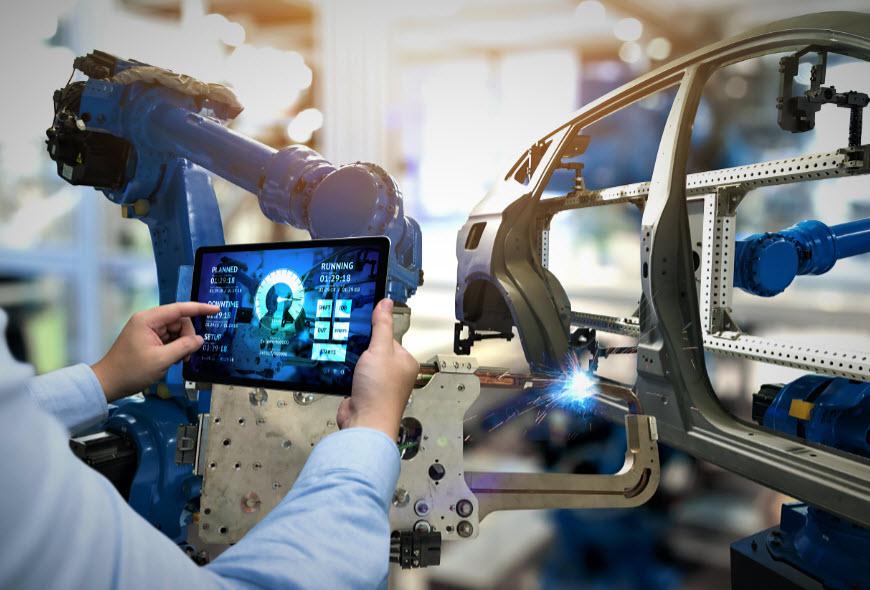Intelligence Technology Artificial intelligence (AI) and robotics have rapidly advanced in recent years, transforming various industries, including automotive. This article delves into the integration of AI and robotics in vehicles, exploring the benefits. Applications and future implications of this groundbreaking technology.
Enhancing Safety with AI and Robotics
One of the primary benefits of integrating AI and robotics in vehicles is the potential to significantly enhance safety on the roads. AI-powered systems, such as collision avoidance and lane departure warning systems, use sensors, cameras, and advanced algorithms to detect and respond to potential hazards. Robotics, in the form of autonomous driving technology, further eliminates human errors, offering the promise of safer roads with reduced accidents caused by human factors.
Autonomous Driving: The Future of Mobility
Autonomous driving is a key application of AI and robotics in vehicles, revolutionizing the way we travel. Self-driving cars leverage AI algorithms, sensor technologies, and machine learning to navigate roads, interpret traffic signals, and make real-time decisions.
With the potential to reduce congestion, increase efficiency, and provide mobility for individuals who are unable to drive, autonomous vehicles hold immense promise for the future of transportation.
Advanced Driver Assistance Systems (ADAS)
AI and robotics enable the development of advanced driver assistance systems (ADAS), which augment human driving capabilities. ADAS features include adaptive cruise control, automatic emergency braking, blind-spot detection, and parking assistance. These technologies improve driving comfort, convenience, and overall safety by leveraging AI algorithms to monitor and respond to the surrounding environment.
Human-Machine Interface (HMI) and Natural Language Processing (NLP)
The integration of AI and robotics in vehicles also enhances the human-machine interface (HMI). Natural language processing (NLP) enables voice recognition and interaction with in-car systems, allowing drivers to control various functions without taking their hands off the wheel or eyes off the road. This seamless interaction improves the overall driving experience and minimizes distractions.
Data Analytics and Predictive Maintenance
AI and robotics generate vast amounts of data, which can be harnessed for data analytics and predictive maintenance in vehicles. By analyzing data from sensors and other connected systems, AI algorithms can detect patterns, identify potential faults, and predict maintenance requirements. This proactive approach to vehicle maintenance increases reliability, reduces breakdowns, and optimizes operational costs.
Intelligent Traffic Management Systems
The integration of AI and robotics in vehicles extends beyond individual cars to encompass intelligent traffic management systems. These systems leverage AI algorithms to analyze real-time traffic data, optimize traffic flow, and improve congestion management. By coordinating the movement of vehicles and optimizing traffic signal timings, AI-based traffic management systems enhance overall transportation efficiency.
Overcoming Challenges and Ethical Considerations
While AI and robotics offer significant advancements in vehicle technology, several challenges and ethical considerations must be addressed. Ensuring the reliability and safety of autonomous driving systems, protecting user data privacy, addressing liability issues in accidents involving autonomous vehicles, and establishing ethical guidelines for AI decision-making are critical aspects that require careful attention and regulation.
The Future Implications of AI and Robotics in Vehicles
As AI and robotics continue to evolve, the future implications for vehicles are vast. From fully autonomous vehicles dominating our roads to intelligent transportation systems that seamlessly integrate various modes of transportation, the potential for AI and robotics to transform the mobility landscape is immense. Additionally, advancements in AI algorithms and robotics technology will continue to improve vehicle safety, energy efficiency, and user experience.
Conclusion
The integration of artificial intelligence and robotics in vehicles represents a significant milestone in the evolution of transportation. From enhancing safety and driving experience to enabling autonomous driving and intelligent traffic management, AI and robotics have the potential to revolutionize mobility.
However, careful considerations must be given to address challenges, regulations, and ethical concerns. By embracing this transformative technology responsibly, we can unlock a future where vehicles are not just means of transportation, but intelligent, efficient, and safer companions on our journeys.

